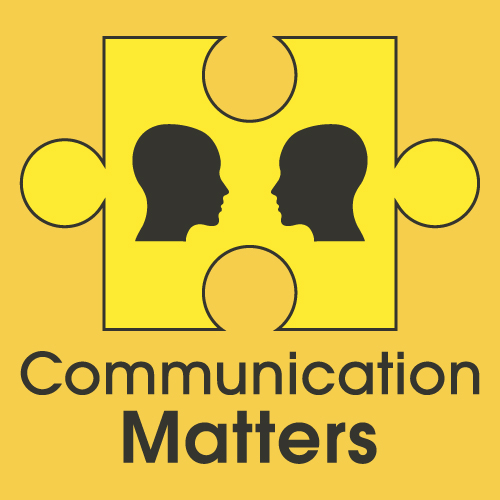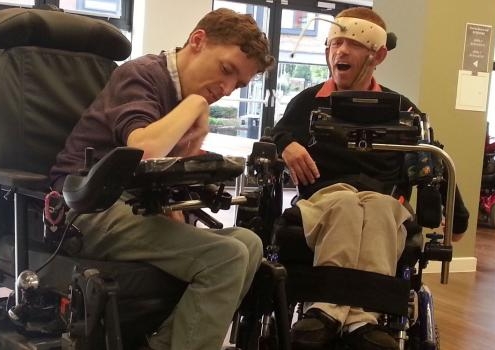The Communication Partnership
Communication is a two-way process. The “listener”, or communication partner, is as important as the “speaker”. The listener will need to develop a communication system with a person who has a number of disabilities.
The communication partner plays an important role because they interpret the reactions of the speaker to different experiences. Every movement, gesture and vocalisation has a meaning. Understanding all of these takes time, patience and a positive attitude towards the speaker’s ability to communicate.
Yes or No
Finding out how someone indicates “yes” and “no” might seem really basic, but it is very important.
It is very difficult to have a conversation with someone, to ask them a question, or even to find out basic information – for example, “Does it hurt here?” – if you cannot understand how they communicate “yes” and “no”.
If they are not able to speak, they will not be able to say “yes” or “no”. They also may find it difficult to nod or shake their head. You might have to ask them, “Show me how you say yes” and “Show me how you say no.”
Some examples of ways that people who are not able to speak indicate “yes” and “no” are:
- looking up for “yes” and down for “no”
- blinking once for “yes” and twice for “no”
- a tight fist for “yes” or an open hand for “no”
- pointing at the words “yes” and “no”’ printed on cards
- moving their foot up for “yes” and keeping it still for “no”
Finding a way to signal Yes or No reliably that can be understood by a range of people can take some time. However, it is a good starting point for future communication.
Signing and gestures
Signing and gestures offer visual clues to what someone is saying. Some people with severe speech difficulties also struggle to understand and remember what people say to them. Signing and gesturing as well as speaking can give the listener additional clues that help them understand what the speaker is saying. Some people express themselves most effectively with body language, gestures and signing.
Using objects
You can use objects to encourage people to choose; for example, holding up a bottle of cola and a bottle of orange offers them a choice of drink. You could also use objects to let them know what is going to happen; for example, you could show someone it’s time to go swimming by letting them feel their swimming costume before putting it in a bag.
When we use objects this way, we sometimes call them “objects of reference”. It is essential to always use the same item to signify the same event.
Using Photographs
Many people look at photographs and understand what they mean. Photographs can be used in exactly the same way as objects of reference. Showing some photographs of familiar objects around the house – a toy fruit, TV, family and friends – lets someone know what is going to happen, choose what they want to do, or tell you something.
Try starting by showing them a choice of two photographs, then gradually increase the number of choices of photographs.
Ensure communication is possible at all times
It is important someone who has complex communication needs has access to their means of communication at all times. Be helpful by keeping their communication method visible – for instance:
- Today’s timetable displayed in three dimensions using objects of reference
- Appropriate photographs or symbols on the wall in the canteen or in the kitchen
- Appropriate pictures around the sand pit, water tray, classroom or living room
- Pictures pinned to the wall above the bathroom sink, or everyday objects
Using objects of reference
If you are using objects of reference as a way to communicate, think about how a particular object will make sense to the person you are using it with.
We might choose items because they have multisensory properties, such as scented soap to signify washing or a pair of riding gloves that smell of the horse to signify riding. An object may have a link to an activity, like a piece of seat belt/buckle to signify a trip in the car.
The object of reference must be relevant to the individual – two different people may have different objects of reference for the same toy or activity.
Avoid objects made of a material the person dislikes.
Handling an object can help children, and adults, to build up a mental picture of an object of reference.
You can use a miniature version of an object, but be aware this choice may be more for your benefit than the person you are communicating with. If they have vision impairment, then a toy car bears little resemblance to the experience of going in a car – they cannot see that the toy car is a small version of a real car; it does not feel like one, sound like one, smell like one, or produce the sensation of riding in one.

